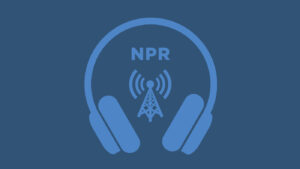Confetti-Filled Cascarones: A Cherished Easter Tradition in Texas
In the heart of Austin, Texas, Denise Solis keeps alive a colorful Easter tradition that connects her to cherished memories of her mother. This custom involves crafting cascarones, which are confetti-filled eggs, and has deep roots in both Texas and Northern Mexico.

Denise Solis shows her four-year-old son Noah Solis how to seal a cascaron (confetti-filled egg) with tissue paper. Patrick Davis/For NPR
The tradition began with Solis’ mother, Rosemary Valdez, who was diagnosed with stomach cancer in 2003. As Easter approached, Valdez, despite her illness, continued the annual activity of preparing Easter baskets filled with cascarones for the younger family members. “She couldn’t do a lot of things at that point,” Solis recalls, “But she could fill eggs with confetti.”
These eggs have long been an integral part of Easter festivities in Texas and Northern Mexico. Children delight in discovering the cascarones on Easter Sunday, gleefully smashing them over each other’s heads to release a shower of vibrant confetti.
As Solis spent those final weeks with her mother, they devoted time to preparing the eggshells together. Valdez passed away a day before Easter, but Solis delivered the Easter baskets, a final gift from her mother, to the family the following day. “I remember us, chasing each other around the backyard and breaking the cascarones over each other’s heads, and just thinking how special that was,” Solis reminisces.
Today, Solis has passed this tradition down to her son, Noah. Each time she cooks an egg, she takes care to preserve the shell, rinsing it, and sometimes dyeing it in bright hues. Once dried, the shells are filled with confetti and sealed with tissue paper and glue.
According to Norma Cantu, a Humanities Professor at Trinity University in San Antonio, the egg symbolizes rebirth and new beginnings, a theme that ties into the Easter celebration of resurrection. “The egg is a symbol for that opening up, for that entrance to a new life,” she explains.
Cascarones have been part of Texan Easter traditions since the state was part of Mexico, and for Solis, they represent a deep connection to her past. Observing her son and his friends play, she is reminded of her mother’s spirit. “She was always showering us with love and care and wanting us to feel special and have fun,” Solis shares. “Seeing the confetti flying in the air, I just felt the love.”
This article was originally written by www.npr.org




